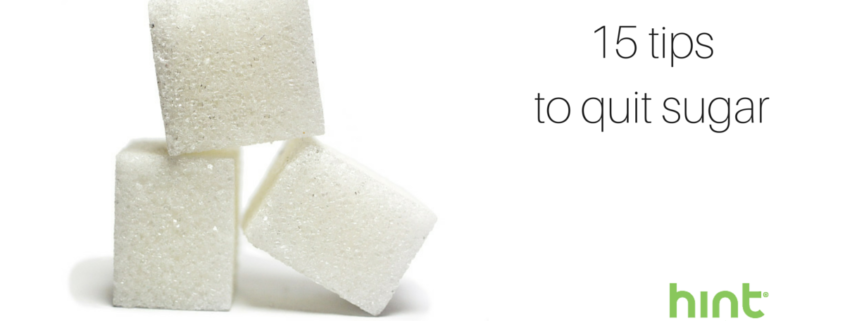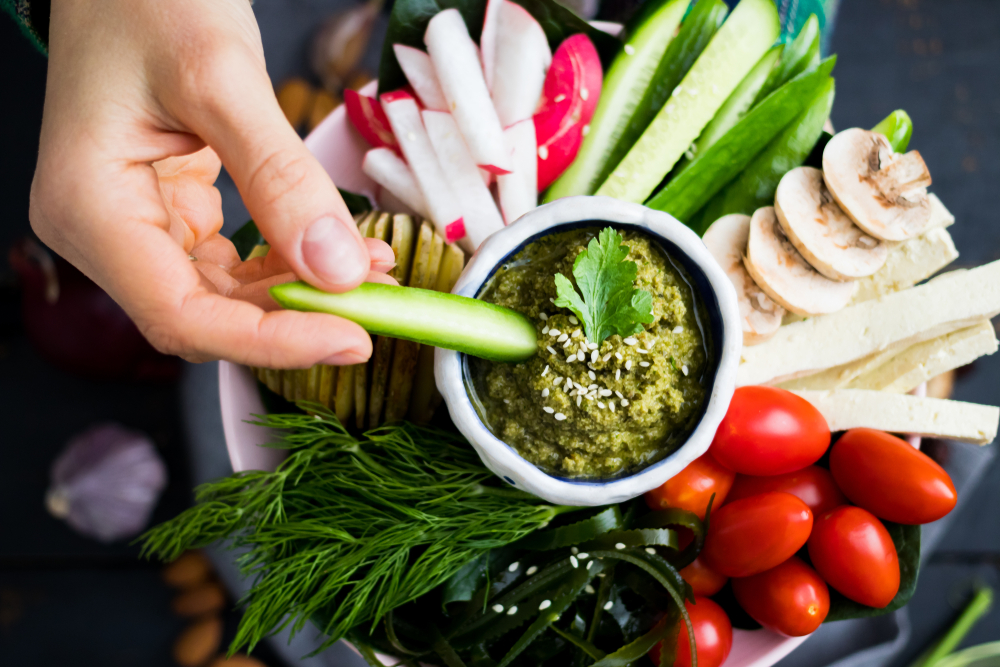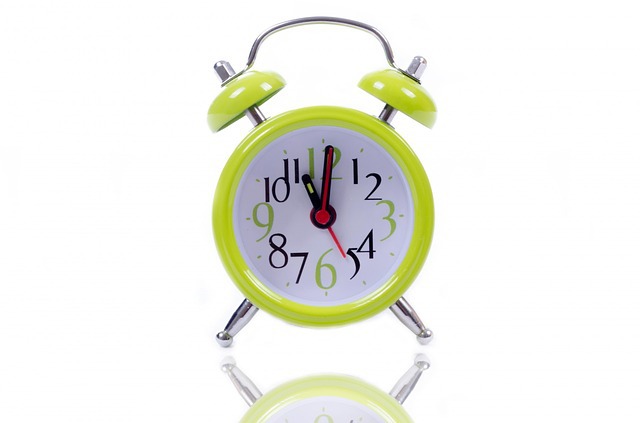15 Tips to Quit Sugar
According to the United States Department of Agriculture (USDA), Americans eat over 150 pounds of sugar per year. This boils down to 52 teaspoons of sugar per person per day (yikes!).
This is in stark contrast to recommendations from the World Health Organization (WHO), who is now urging adults and children to reduce their daily intake of sugars to 6 teaspoons per day (note: this number doesn’t include the natural sugar in whole fruits, vegetables, and dairy, as they provide our bodies with beneficial nutrients). It refers to sugars added to foods and drinks by the manufacturer, cook or consumer, and sugars naturally present in honey, syrups, fruit juices and fruit juice concentrates.
As noted by WHO, most of the sugar consumed today is “hidden” in processed foods that are not usually seen as sweet. For example, 1 tablespoon of ketchup contains around 4 grams (around 1 teaspoon) of sugar. A single can of soda contains up to 40 grams (around 10 teaspoons) of sugar. A 1/2 cup of marinara sauce clocks in around 8 grams (2 teaspoons) of sugar.
There is mounting evidence that the less sugar consumed, the less health problems we encounter, from heart health to diabetes to weight gain.
Sugar does absolutely nothing for our health, beyond adding unneeded calories. Yet, we continue to eat (and drink) it.
Whether you’re trying to cut sugar to lose weight, prevent diabetes, or simply feel better, here are 15 tips to quit sugar.
1.) Start paying attention to how much sugar you’re actually eating
Being aware is the first step to making any change. Here, start small by looking at how often you eat sweets, flavored yogurts, candy, chocolate, ice cream … the obvious players. You may be surprised, once you start tuning-in, how much sugar you’re actually eating.
2.) Read ingredients
Once you’re ready to dig deeper, begin reading ingredients and looking at food labels. Sources of added sugar can be sneaky.
Some common forms of sugar you’ll see on the ingredient list are: sucrose, maltose, dextrose, lactose, high fructose corn syrup, cane juice, dehydrated cane juice, barley malt, beet sugar, corn syrup, corn syrup solids, carb syrup, brown sugar, agave, malt syrup, fruit juice concentrate, fruit juice crystals, turbinado, refiner’s syrup, and maple syrup.
3.) Buy whole foods
You’ve heard this one again and again, but it’s true. Buying foods in their most whole form skips the need for manufacturers to add salt, sugar, fat, and preservatives we just don’t need. Load your shopping cart with foods like fruits, veggies, meats, beans, lentils, and seafood.
4.) Ditch the diet sweeteners
Diet sweeteners can be up to 600 times sweeter than sugar – no wonder they’re addicting! Cut them out and start looking for them in the ingredients because more and more they’re being added to cut back on calories, and so products can (sneakily) say they’re “low sugar.” They’re often added to yogurt, oatmeal, low-sugar protein bars, and of course diet drinks. Common names of diet sweeteners in the ingredient list are: saccharin (Sweet N’ Low), aspartame (Equal) and sucralose (Splenda).
Quick tip: add flavor to your oatmeal (without sugar or diet sweeteners) by making it with Hint Water (instead of water) and swap diet drinks for Hint Water or Hint Fizz.
5.) Drink lots of water
Water helps tremendously with cravings and it prevents your brain from thinking you’re hungry, when you’re really just thirsty. The reality is that most of us are dehydrated. The Institute of Medicine recommends women get approximately 2.7 liters (91 ounces) of total water – from all beverages and foods – each day, and men an average of approximately 3.7 liters (125 ounces daily) of total water a day. Hint Water is perfect for people who need to drink more water, but don’t like plain water.
6.) Get good sleep.
When you lack sleep, research shows you naturally want to eat more and for most, this means sugar. Aim for 7-8 hours of sleep every night. It’ll protect you from being too tired and wanting a quick pick-me-up of something sugary, which will inevitably have you (and your blood sugar) in a never-ending cycle of ups and downs.
7.) Check-in with your hunger every 3-5 hours
When we go too long without eating, we’re inevitably setting ourselves up to eat too much. Eat a balanced meal (with protein, healthy fats, and fiber) in the morning within an hour of waking (example: an egg with half an avocado on whole-grain toast). Then, every few hours after, check-in with your hunger. If you go too long without eating, you’re setting your body up to get too hungry, eat too much, and crave sugar. Plus, we always make worse choices when we’re starving.
8.) Keep sugar out of our home
There is definitely something to the phrase, ‘Out of sight, out of mind.’ If you’re seriously trying to change your ways and nix sugar, keep it out of your home.
9.) Watch our for non-fat foods
Just because a food says “non-fat” doesn’t mean it’s necessarily healthy. For example, a muffin may be non-fat but full of sugar, sodium, and a ton of calories. It’s important to read the ingredients and look beyond the marketing on the package. Know that there are 4 grams of sugar in a teaspoon, so keep that in mind when reading labels. If a label has more than 6-8 grams of sugar per serving, you may want to think again.
10.) Stay motivated
Here, at Hint Water, we believe in the power of the check mark. Doesn’t checking something off your list feel soooo amazing? Well, trust us, so does checking off your goals each day! Use an app, like Goal Streaks, to stay motivated and check each day you’ve achieve your sugar-ditching goal!
11.) Give yourself time
Be realistic and patient. The first couple weeks may be fairly difficult. But, once you’ve found a new rhythm and see how much better you feel, you will be inspired to maintain your new healthy living ways. Once you hit a month, there will be no turning back.
12.) Be kind to yourself
Throughout this process, remember, that you’re doing the best you can, and you’re also learning a lot along the way. Don’t beat yourself up, if you aren’t perfect. Just remember why you’re doing this (all the reasons it’s important) and keep moving forward.
13) Watch for black and white thinking
Just as much as being kind matters, so does avoiding black and white thinking. If you’ve had one “bad” meal, that doesn’t mean you’re a failure, or that eating healthfully for the rest of the day no longer matters. Just do better next time –simple. Use the experience as evidence that changing is actually really important to you. We learn the most from our failures, so don’t sabotage yourself. Take the lesson and move on.
14.) Enjoy treats
Just because you’ve decided to remove added sugar from your diet doesn’t mean you can’t enjoy a treat. Here are some of our favorites: apples and almond butter, berries with plain Greek yogurt, and “banana ice cream” (freeze a banana and then blend for a super tasty treat).
15.) Get support
Grab a few a health-conscience friends and fill them in on what you’re doing and ask if they’d like to join. Check-in with each other every day via text to stay connected, or even start your own Facebook group.
We’d love to hear from you in the comments below! How do you keep sugar out of your diet?
1. USDA. “Profiling Food Consumption in America.” United States Department of Agriculture. Sowers, Robert. 2010. http://www.usda.gov/
2. WHO. “WHO Calls on Countries to Reduce Sugars Intake Among Adults and Children.” World Health Organization. 2015. http://www.who.int/mediacentre/news/releases/2015/sugar-guideline/en/










